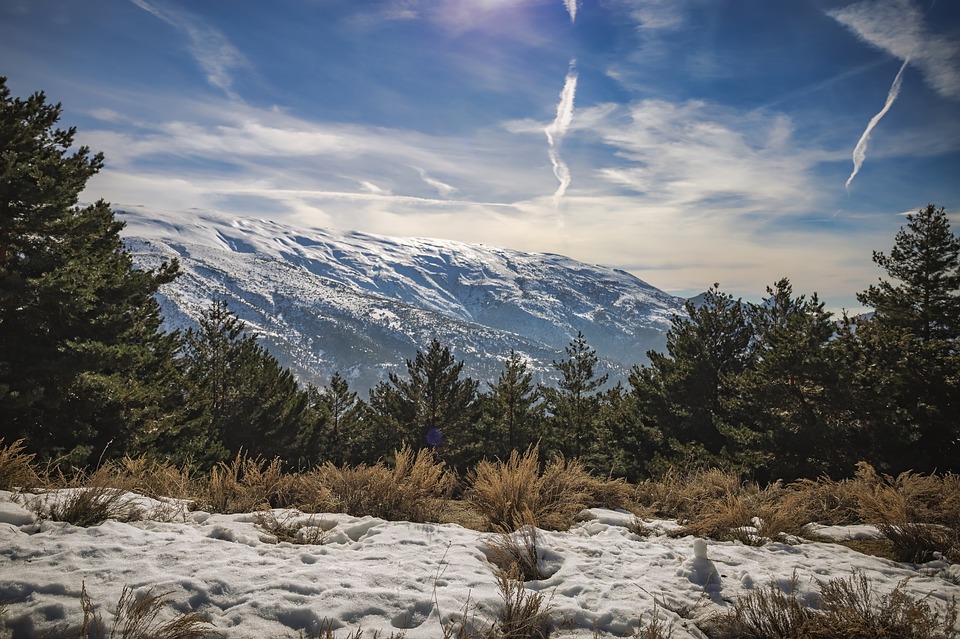
The paleoecological study of several wetland areas in the Sierra Nevada mountains of Spain led by researchers from the Department of Stratigraphy and Paleontology at the University of Granada have demonstrated that the Sierra Nevada ecosystems are excellent sensors for determining the effects of environmental and climate change, as well as human impact during the past millennia in the southern Iberian Peninsula, as well as a key forecasting the consequences of future climate change to these ecosystems.
The Sierra Nevada is one of the most prominent mountain ranges in southern Europe and is situated in an interesting geographic location between humid and arid climates. As a consequence, it is one of the most important centers of plant diversity in the western Mediterranean region. The Padul wetland is located at the southwest foothill of Sierra Nevada and is one of the most important wetland areas in southern Europe, contains a long sedimentary sequence making this area very interesting for paleoenvironmental and paleoclimatic reconstructions.
A new sedimentary sequence from Padul, including a complete paleoarchive of the past 11,600 years, was recovered in 2015. The article “Millennial-scale cyclical environment and climate variability during the Holocene in the western Mediterranean region deduced from a new multi-proxy analysis from the Padul record (Sierra Nevada, Spain)” recently published in Global and Planetary Change, reports of the past environmental and climate transitions between the different epochs through the Holocene (last 11,600 years) in the western Mediterranean region and the link with global atmospheric-oceanic-solar dynamics. To achieve the main goals proposed for this project, we had to first overcome a multi-proxy analysis in the sedimentary sequence using different laboratory techniques (lithological identification, a measure of physical properties, micro- and macro-fossil identification, organic and inorganic geochemistry analyses) and posteriorly statistical treatments to the dataset.
Our results show that a significant climate change occurred around 4,700 years ago, when a significant decrease in the regional Mediterranean forest cover (mainly formed by evergreen and deciduous oaks) occurred. In addition, we found that changes in the environment happened cyclically at shorter scales, conditioned by two different climate dynamics affecting the western Mediterranean region, one of them with a cyclical periodicity between 1000 and 2000 years affecting the environments during the early and middle Holocene (from around 11600 to 4700 years ago), probably related with external solar forcing and another cyclical climatic pattern with an approximately 1500 years periodicity, which affected these ecosystems during the last 4700 years and was probably mainly related with an oceanic-atmospheric control, partially related with the North Atlantic Oscillation mode (NAO).
A high human impact was also noticed in this area for the last 1,500 years, greatly affecting the ecosystems, mostly by the cultivation of cereals and fruit trees such as olive.
These findings are described in the article entitled Millennial-scale cyclical environment and climate variability during the Holocene in the western Mediterranean region deduced from a new multi-proxy analysis from the Padul record (Sierra Nevada, Spain), recently published in the journal Global and Planetary Change.
This work was conducted by María J. Ramos-Román, Gonzalo Jiménez-Moreno, Jon Camuera and Antonio García-Alix from the University of Granada (Spain), R. Scott Anderson and Cole Webster from the Northern Arizona University (USA), Francisco J. Jiménez-Espejo from the Japan Agency for Marine-Earth Science and Technology (Japan), Dirk Sachse from the Helmholtz Centre Potsdam (Germany), Jaime L. Toney from the University of Glasgow (UK), José S. Carrión from the University of Murcia (Spain), and Yurena Yanes from the University of Cincinnati (USA).









